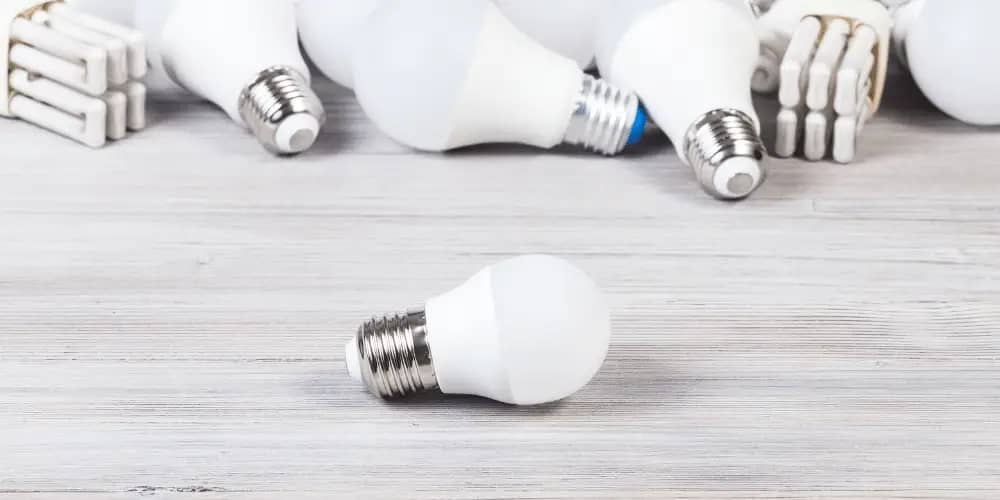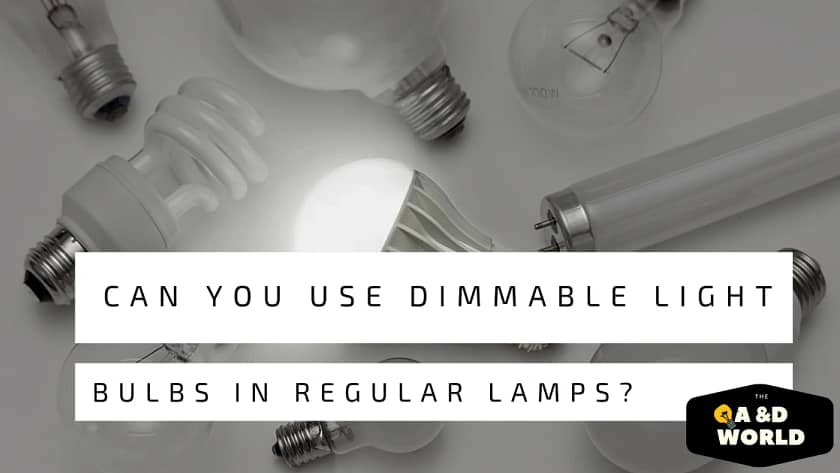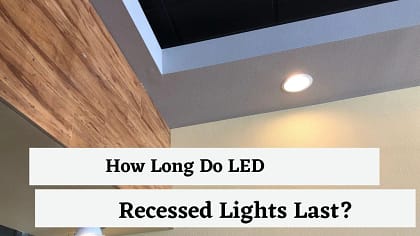Dimmable LED light bulbs are the future of general lighting. Incandescent and halogen bulbs have provided warm light for years, but they have their pitfalls. They are flimsy, burn out quickly and give off a lot of heat.
LEDs are much more efficient at converting electricity into light and do not generate as much heat. They are also easier to dim than traditional lights.
Yes, you can use dimmable bulbs in regular lights without any problems. However, your bulb will not be dimmed and shine at 100% brightness. If you use a non-dimmable bulb in a dimmable light fixture, you will have some problems with dimming.
With a non-dimmable bulb, there is no way to adjust the brightness. The bulb may start to buzz or flicker and get damaged in the process.
Dimmable light bulbs have many advantages over their non-dimmable counterparts. For one, they save up to 98% electricity and lower your lighting bill. They can also improve the mood of the room and preserve the longevity of the bulb.
How does a Dimmer Switch Work?

Light dimmers are an essential part of your home’s electrical system because they allow you to adjust the light intensity of a light bulb from low to high. Traditional dimmers increase or decrease the voltage of the light bulb.
Incandescent dimmers are a perfect example of analog dimming, while LED dimmers use analog dimming and pulse width modulation (PWM).
Pulse width modulation (PWM) is a dimming technique for controlling the brightness of LEDs. The idea behind PWM is to keep LEDs on for a certain percentage of the time.
PWM makes LED appear “half on” at brightness settings of 50% and 70%. This dimming results in lower light output but allows precise control of LED brightness with minimal circuitry.
When it comes to saving energy, installing dimmer switches helps reduce energy consumption by using less light. In addition, dimmer switches can also make your home more beautiful.
What Happens When You Try To Dim A Non-Dimmable Bulb?
It is not a good idea to dim an ordinary light bulb. For one, it will not work because the bulb does not have the components to work with a dimmer switch. Light bulbs and dimmers need to be compatible with each other.
Also, your light bulb will slowly deteriorate every time you try to dim it. You will notice a buzzing noise and flickering. For this post, I experimented with dimming a regular light bulb.
The light levels did not change, and after a few days, the bulb began to flicker erratically. Then after a few days, the bulb stopped working altogether. My findings were that you should not dim a non-dimmable light bulb.
Dimming Issues with Dimmable Bulbs
For decades, people could dim incandescent bulbs, a handy feature for setting mood lighting in a room. But with the new LED lighting technology, there are some issues regarding how low dimmable LEDs can go.
Unlike traditional incandescent bulbs, LEDs have a wider dimming range. It’s also important to remember that not all LEDs are suitable for dimming.
Dimmable LEDs can still have problems such as dropouts, flickering, and idling.
Drop out means that the LED will turn off completely when dimmed closer to its highest percentage. They may suddenly become 100% bright with some flickering.
Another issue that can arise from dimming a LED bulb is the loss of the bulb’s AC driver efficiency. An AC driver is important because it protects the bulb from overheating and failing. Dimmers can slowly destroy the driver decreasing the life span of the bulb.
What Is A Dimmable Light Bulb?
A dimmable light bulb is a light bulb with a dimming function, which can adjust the brightness of the light. As its name implies, it is most commonly used in the home and is often seen in bedrooms, living rooms, and dining rooms.
The most common types of dimmable lights include low voltage halogen, incandescent, fluorescent, compact fluorescent lamps (CFL), and LED bulbs.
Almost any bulb can be made dimmable by adding a mechanical or electronic dimmer switch to its base. These switches can adjust the brightness of the bulb by changing the voltage supplied to it.
What Is The Difference Between Dimmable And Non-Dimmable Light Bulbs?
There are a lot of differences between dimmable and non-dimmable light bulbs.
Firstly, dimmable light bulbs cost more than non-dimmable light bulbs. This is due to the additional circuitry in the bulb’s base that allows it to dim.
The biggest difference between these bulbs is that dimmable bulbs are designed to safely change the brightness of a bulb, whereas non-dimmable bulbs aren’t designed for this. Similarly, Non-dimmable bulbs are not compatible with dimmer switches.
Non-dimmable bulbs only produce 100% of lighting and turn off and on by flicking a light switch.
Can I Use An Incandescent Dimmer With LED Lights?
Yes. You can use an incandescent dimmer with LED lights.
Morden dimmers are designed to work with a variety of loads, including incandescent bulbs (which produce heat) and CFLs (which do not). However, LED bulbs are more sensitive to variations in voltage than other bulbs are.
If you’re using a dimmer with LED bulbs, you’ll need to consider its limitations. First, make sure that your dimmer is compatible with your LED bulb.
Not all dimmers work well with LEDs; some can damage the bulb or shorten its lifespan. Always check the packaging for compatibility between the bulb and the dimmer before installing them together.





